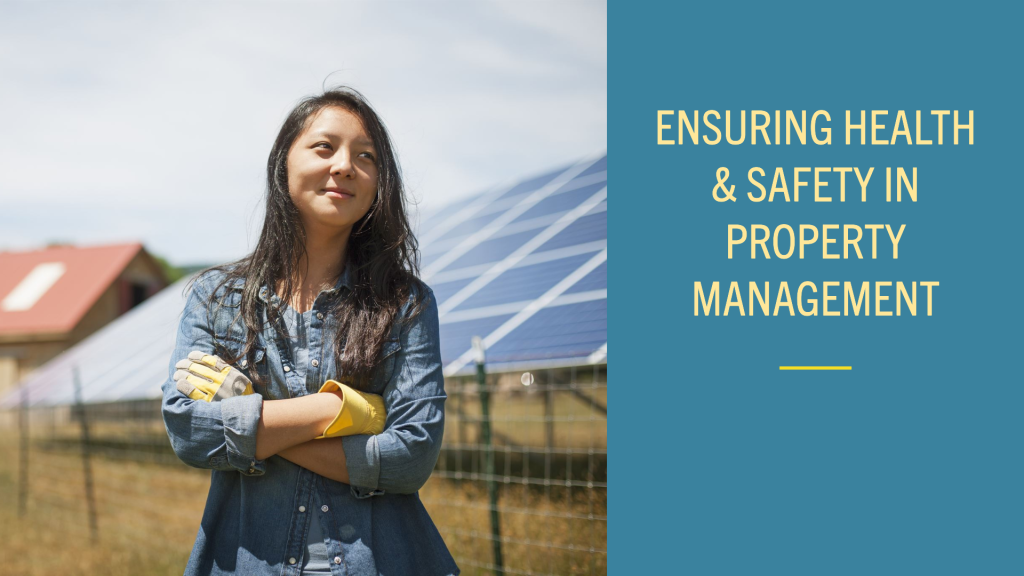
Good Health and Safety management is crucial for protecting businesses, owners, and their staff from criminal prosecution and personal injury claims. It also enhances the image and reputation of the company. In property management, issues such as fire safety, asbestos management, water safety, electrical safety, and the prevention of trips and falls can have serious effects on the Health and Safety of residents, visitors, employees, and contractors. Improper management of these issues can lead to injuries, fatalities, legal prosecution, financial loss, and damage to reputation.
Legal Duty
There is a legal obligation to establish suitable arrangements for managing Health and Safety. The Management of Health and Safety at Work Regulations 1999 mandates that businesses have arrangements to control Health and Safety risks. Minimum requirements include:
All blocks of flats, including converted houses, must have a Health and Safety, including Fire Safety, risk assessment for communal areas, a legal requirement under the Management of Health and Safety at Work Regulations 1999. This includes all areas such as gardens, plant rooms, and lift motor rooms, which are frequently accessed by employees or contractors.
Communal Areas
Communal areas encompass not just the internal parts of a building but also the roof, structure, and external areas. When conducting a risk assessment, every area, including gardens and electrical intake rooms, must be included, as they are often attended by employees or contractors.
The responsibility for complying with Health & Safety regulations falls on the landlord or the person managing the building, which could be a managing agent, a Residents’ Management Company (RMC), or a Right to Manage Company (RTM). Ignoring Health & Safety due to cost can lead to greater expenses if an accident or injury occurs.


The Health and Safety at Work Act 1974 (HASAWA)
The Health and Safety at Work Act 1974 (HASAWA) is the cornerstone of workplace Health and Safety legislation in the UK. This comprehensive law ensures the well-being of employees, employers, and visitors. HASAWA mandates employer responsibilities, including:
Employees also have responsibilities under HASAWA, such as:
Addressing Workplace Hazards
Maintaining a clean and hazard-free workspace is essential. If removing a hazard is not feasible, it should be clearly marked to prevent accidents. Employers and employees must work together to identify and mitigate risks.
Specific Health and Safety Regulations
Health and Safety Beyond the Office
When employees visit properties for tasks like rental appraisals or viewings, they must take greater responsibility for their safety. Key steps include:
Office Security Measures
Maintaining personal security in the office is as important as Health and Safety. Key security practices include:
Security Outside the Office
When conducting activities outside the office, such as property viewings, it’s crucial to prioritize security:
Property Management and the Health and Safety at Work Act
Under the Health and Safety at Work Act (HSWA), commercial property owners, landlords, and property managers are considered PCBUs (Persons Conducting a Business or Undertaking). They have a duty of care to ensure Health and Safety for everyone involved with or affected by work on their property.
Roles and Responsibilities:
Overlapping Duties: When multiple businesses are involved, they must work together by consulting, cooperating, and coordinating their activities regarding workplace Health and Safety.
Bodies Corporate: Considered PCBUs with a duty to ensure Health and Safety. Officers, such as directors and board members, must ensure the organization manages risks effectively.
Rental Property Owners: Ensure that those engaged to work on the property are competent and qualified. Landlords are not responsible for tenants’ actions while living on the property but must ensure safety during work carried out on the property.
By adhering to these guidelines and responsibilities, property management professionals can ensure a safe and secure working environment, both in and out of the office. Regular training and vigilant risk assessments are key to maintaining high standards of Health and Safety.
Map
Email Us
info@connectxservices.com
Call Us
UK Office Address: 71-75, Shelton Street, London, England, WC2H 9JQ
UAE Office Address: Meydan Grandstand, 6th floor, Meydan Road, Nad Al Sheba, Dubai
©2024 ConnectX Services. All Rights Reserved.
Terms and Conditions
Privacy Policy

Subscribe to our below newsletter and never miss any update